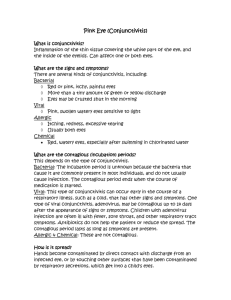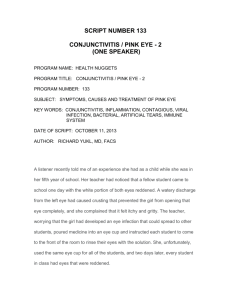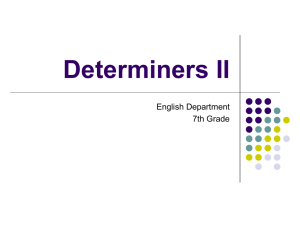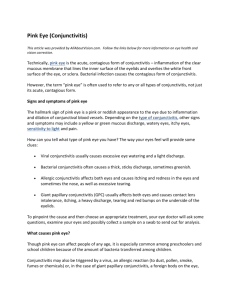Presss Release
advertisement
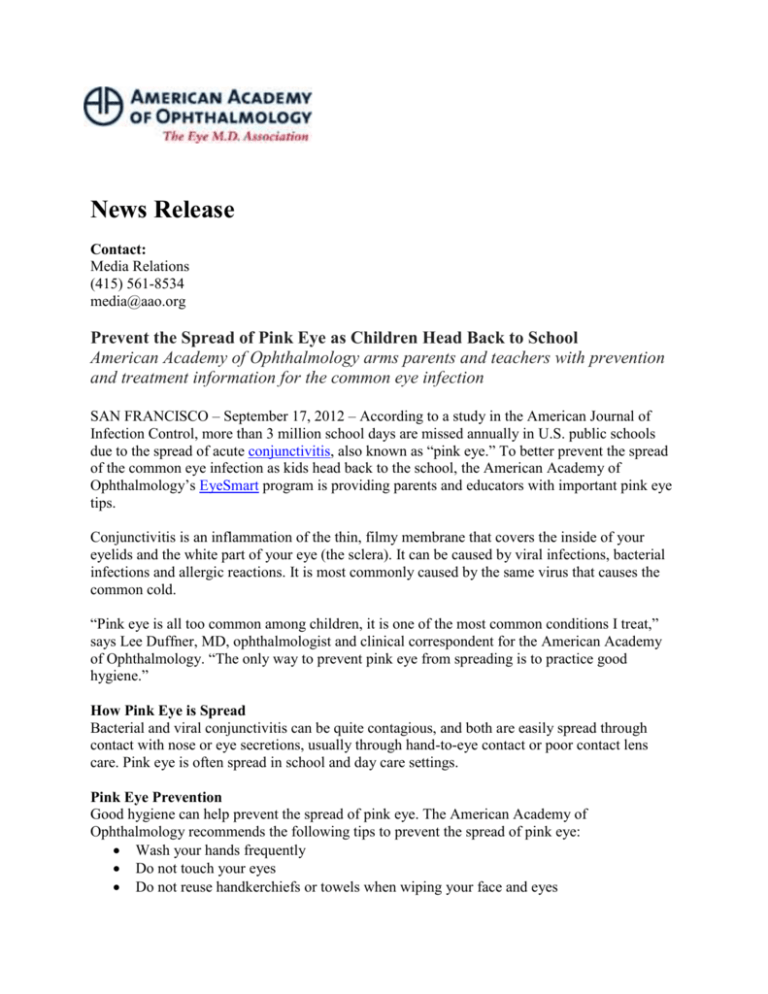
News Release Contact: Media Relations (415) 561-8534 media@aao.org Prevent the Spread of Pink Eye as Children Head Back to School American Academy of Ophthalmology arms parents and teachers with prevention and treatment information for the common eye infection SAN FRANCISCO – September 17, 2012 – According to a study in the American Journal of Infection Control, more than 3 million school days are missed annually in U.S. public schools due to the spread of acute conjunctivitis, also known as “pink eye.” To better prevent the spread of the common eye infection as kids head back to the school, the American Academy of Ophthalmology’s EyeSmart program is providing parents and educators with important pink eye tips. Conjunctivitis is an inflammation of the thin, filmy membrane that covers the inside of your eyelids and the white part of your eye (the sclera). It can be caused by viral infections, bacterial infections and allergic reactions. It is most commonly caused by the same virus that causes the common cold. “Pink eye is all too common among children, it is one of the most common conditions I treat,” says Lee Duffner, MD, ophthalmologist and clinical correspondent for the American Academy of Ophthalmology. “The only way to prevent pink eye from spreading is to practice good hygiene.” How Pink Eye is Spread Bacterial and viral conjunctivitis can be quite contagious, and both are easily spread through contact with nose or eye secretions, usually through hand-to-eye contact or poor contact lens care. Pink eye is often spread in school and day care settings. Pink Eye Prevention Good hygiene can help prevent the spread of pink eye. The American Academy of Ophthalmology recommends the following tips to prevent the spread of pink eye: Wash your hands frequently Do not touch your eyes Do not reuse handkerchiefs or towels when wiping your face and eyes Change pillowcases frequently Do not use old cosmetics or share makeup Maintain proper contact lens care and cleaning Home Care Tips Apply a warm or cool, lint-free compress to closed eyelids to relieve discomfort. If a child has conjunctivitis in one eye only, be careful not to use the same cloth on both eyes in order to avoid spreading the infection from one eye to the other. A warm compress is usually best for bacterial or viral conjunctivitis, while a cool compress is best for allergic conjunctivitis. Over-the-counter lubricating eye drops – artificial tears – may also provide relief from pink eye symptoms. If symptoms persist, take your child to see an ophthalmologist to receive proper care. Pink Eye Treatment With viral conjunctivitis, symptoms can last from one to two weeks and then disappear on their own. For bacterial conjunctivitis, an ophthalmologist (Eye M.D.) may prescribe antibiotic eye drops to treat the infection. Allergic conjunctivitis treatment often includes antihistamine medication. For more information about pink eye, children’s eye development, and general eye health information, visit www.geteyesmart.org. About the American Academy of Ophthalmology The American Academy of Ophthalmology is the world's largest association of eye physicians and surgeons - Eye M.D.s - with more than 32,000 members worldwide. Eye health care is provided by the three "O's" - ophthalmologists, optometrists, and opticians. It is the ophthalmologist, or Eye M.D., who can treat it all: eye diseases, infections and injuries, and perform eye surgery. For more information, visit www.aao.org. About EyeSmart The American Academy of Ophthalmology's EyeSmart® program educates the public about the importance of eye health and empowers them to preserve their healthy vision. EyeSmart provides the most trustworthy and medically accurate information about eye diseases, conditions and injuries. OjosSanos™ is the Spanish-language version of the program. Visit www.geteyesmart.org or www.ojossanos.org to learn more. ###
